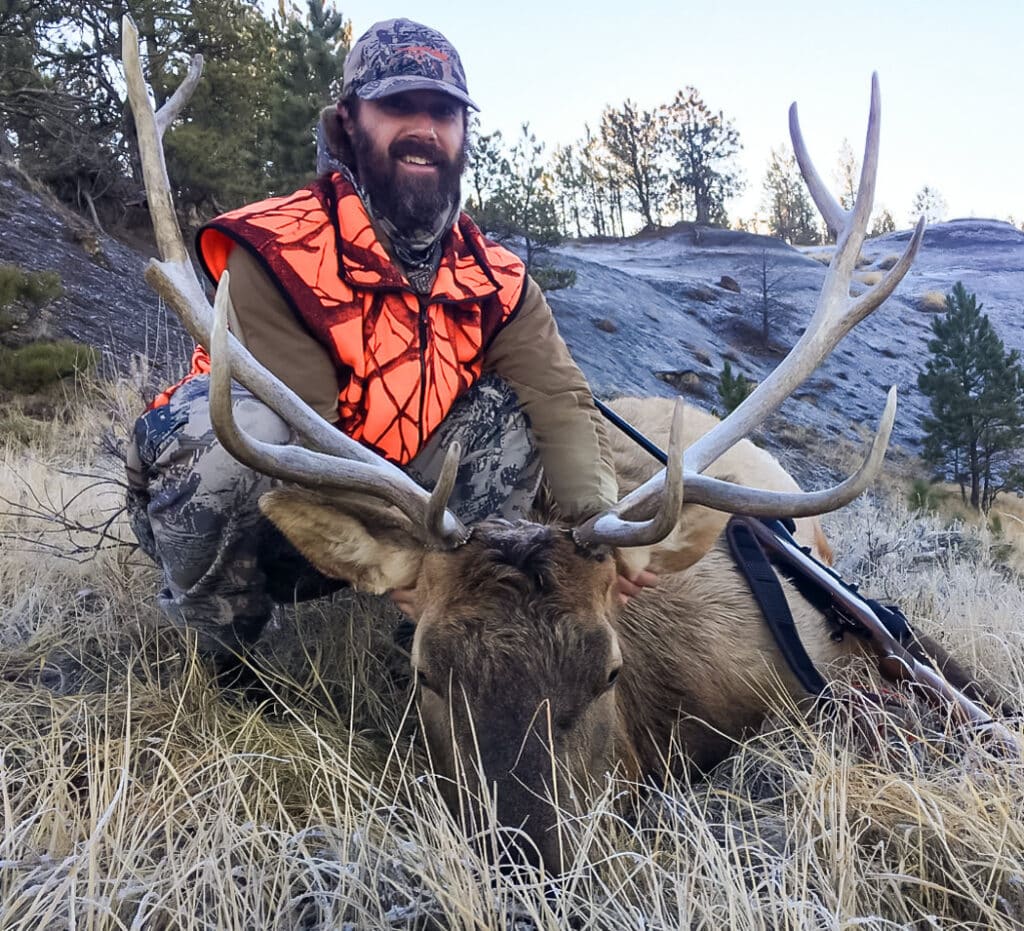We Protect Wildlife
We advocate for ecologically and economically sustainable management policies that benefit Montana's wildlife.
Montana’s Wild Residents
Fish and wildlife that have disappeared from other parts of the West are still abundant in Montana. However, the pressures and threats grow greater and more numerous with each passing year. Habitat degradation and fragmentation, invasive species, pollution, disease, and climate change all threaten to harm the wildlife Montanans have fought so hard to restore and protect. Montana Wildlife Federation works to advocate for sound science and policies aimed at protecting every species found here.
Protecting World-class Big-Game
Montana has some of the highest quality populations of big-game in the western United States. Elk, mule deer, whitetail deer, and pronghorn antelope are just a few of the species that are considered abundant throughout the state. MWF works to ensure that game populations are managed using the best available science and not political influence or special interests.
Protecting Wildlife From Becoming Endangered
While Montana may have some of the most abundant wildlife populations in the world, many species are now under threat from development, unsustainable resource extraction, and a changing climate. MWF fights to ensure these species have adequate protection in terms of habitat quality and connectivity to maintain strong population levels and avoid becoming endangered. MWF also works with state officials to assist in developing statewide recovery plans for currently listed endangered and threatened species.
Sage Grouse Conservation
In recent years, the sage grouse was proposed for protection under the federal Endangered Species Act. A historic conservation effort across 11 Western states is helping reverse the decline and keep the species from becoming endangered. That effort is threatened by politicians who want to hijack the sage-grouse conservation plans and transfer control of public land to states.
Read More
Contain the Spread of Chronic Wasting Disease (CWD) Pledge
Chronic Wasting Disease (CWD) is an always fatal, easily transmissible disease affecting ungulate species throughout North America. CWD is currently spreading throughout Montana’s elk, deer, and moose populations and is of top concern for wildlife officials. Currently, scientists and wildlife managers are searching for ways to both halt the spread of the disease and lower disease prevalence in wildlife populations. As the voice of hunters in Montana, MWF has been actively involved in CWD management at the legislative level and through outreach to hunters.
Read More
At A Glance
We must protect Montana's biodiversity.
We need to keep our wildlife species from becoming endangered.
Stopping the spread of Chronic Wasting Disease (CWD) is crucial for elk, moose, and deer.
Protecting Biodiversity
From the mountains to the plains, Montana is home to a wide-array of wildlife species. Our unique state provides the wide-ranging conditions necessary to foster unparalleled wildlife diversity. Our state houses roughly 110 mammal species, 15 amphibian species, 85 fish species, 17 reptile species, and roughly 10,000 invertebrate species. These numbers don’t even count the migratory species that use Montana as a temporary stopping point. Holistically protecting this biodiversity requires constant vigilance.
Protecting World-class Big-Game
Montana has some of the highest quality big-game populations in the world. Elk, mule deer, whitetail deer, and pronghorn are just a few of the incredible species that roam this landscape. MWF is active at every step of the decision-making process surrounding game species. We ensure the best available science is used to manage big-game and that these species are not subject to political influence or special interests.
Endangered Species
Despite the amazing efforts taken to protect wildlife across Montana, some populations have approached critically low levels. Whether the cause is attributed to past mismanagement or current threats, the Endangered Species Act provides crucial protection for keystone species such as grizzly bears. However, this protection is a temporary fix that sets its sights on fully recovering endangered species.
Protecting Wildlife From Becoming Endangered
Despite the amazing efforts taken to protect wildlife across Montana, some populations have approached critically low levels. Whether the cause is attributed to past mismanagement or current threats, the Endangered Species Act provides crucial protection for keystone species such as grizzly bears. However, this protection is a temporary fix that sets its sights on fully recovering endangered species. MWF works with federal and state wildlife managers to ensure adequate protections are in place for the day these species can be delisted and transferred back to state management.
Grizzly Bear Management
Montana’s grizzly bear population has come a long way from when it was put on the federal ESA in 1975. Today there are nearly 2,000 grizzly bears in the Northern Rockies, most of which live in Montana. It’s an incredible conservation success story that is still evolving. Grizzlies are expanding in both numbers and range, and that presents immense challenges for farmers and ranchers, rural homeowners and communities. MWF is committed to helping build social acceptance for grizzlies as they re-inhabit landscapes where they haven’t been in many decades. We’ve served on the state Grizzly Advisory Council, written grants to help fund conflict prevention efforts and been engaged on the state and federal levels on the future of grizzly bear conservation and management.
Gray Wolf Management
The restoration of the gray wolf in terms of their numbers and spread geographically is one of the most successful reintroductions of endangered wildlife in U.S. history. Wolves are able to be here because of the abundance of prey species including deer and elk. MWF helped write the wolf delisting rider in 2011 that reinstated the federal delisting rule. Wolves are like any other species in that they do need management, and that will include fair-chase hunting. Wolves continue to thrive in Montana.
"There are no words that can tell the hidden spirit of the wilderness, that can reveal its mystery, its melancholy, and its charm." -Teddy Roosevelt
Non-Lead Pledge
Since the 1930s, the Montana Wildlife Federation and its’ members have been the leaders in protecting and enhancing our public lands, clean water, public access, and wildlife. This work is driven by a deep and abiding love for this place we call home. MWF is once again stepping up like no one else to proactively advocate for Montana’s wildlife and people and we need your help in making Montana a lead-free landscape.
MWF knows that hunters care about wildlife like no one else and they have shown a willingness to do the right thing in defense of wildlife. In Montana, we are seeing too many occurrences of our wildlife becoming critically ill due to lead poisoning, contracted from consuming lead left in gut piles. While this is an unintentional repercussion of hunting with lead ammunition, the impact can be mitigated when hunters switch to lead-free alternatives.
We are asking you to join us in our Lead-Free MT initiative by taking the MWF Non-Lead Pledge. By taking the MWF Non-Lead Pledge you agree to help wildlife and your fellow Montanans by:
- Only use lead-free ammunition, such as steel or copper, when hunting.
- Where possible, practice at established ranges so lead on the landscape is confined to specific, manageable areas.
- Help to educate others on the benefits of hunting with lead-free ammunition by sharing your knowledge and experience.
While these steps may seem simple, the positive effects they will have can not be understated. It is our role to stand up for the wildlife that can’t stand up for itself. Stand up for Montana’s wildlife today by taking the MWF Non-Lead Pledge. Together we can support our wildlife and each other by creating a lead-free Montana.
Our Work
Our Work
Our Work
Latest Protecting Wildlife News
Make A Difference
Your generous donation supports Montana Wildlife Federation’s work conserving our wildlife, wild places, and hunting and angling opportunities for current and future generations.

